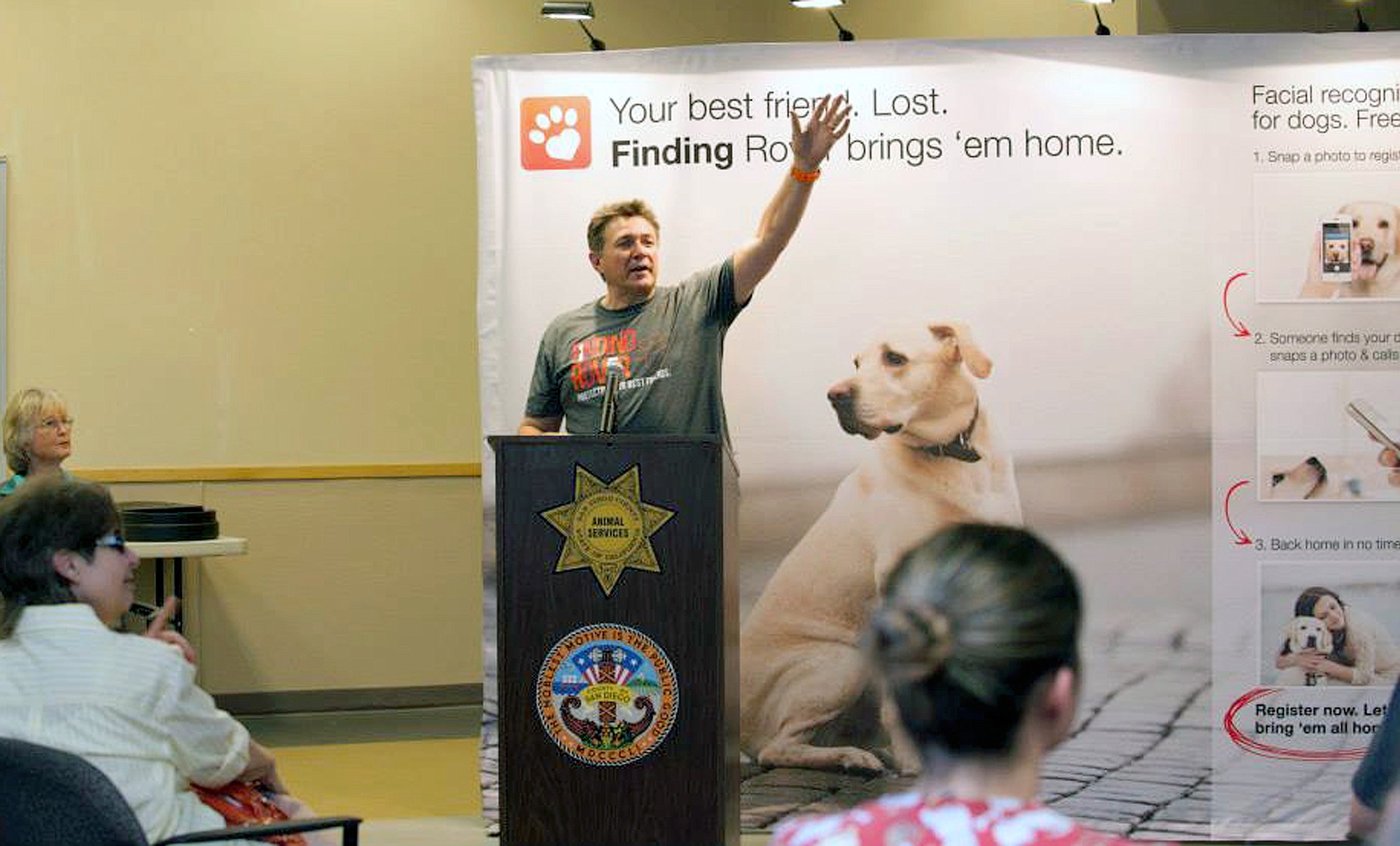LOS ANGELES — Any worried pet owner who has spent days hanging posters, making phone calls and knocking on neighbors’ doors hopes there’s a more scientific way to find a lost dog.
That became a reality when facial recognition technology successfully reunited a pet at San Diego County Animal Services with its owners. Joanne Cox’s family in San Diego turned to FindingRover.com, a website and app that uses technology built by university researchers, to reconnect with their dog Roxy, a Shiba inu.
The website keeps a database of photos from the three county shelters and tries to match eight distinctive facial markers on dogs with images uploaded by users searching for lost pets.
Eyes and noses are important areas that differentiate pooches, including eye size and their position near the snout.
FindingRover.com founder John Polimeno wants to expand the photo database to improve the odds of more happy endings, with shelters elsewhere set to sign on. He’s also showing it to rescues, veterinarians and dog groups and is visiting other countries.
The website is unique in using facial recognition but stands among many online tools people increasingly use to find lost pets.
There are alarm systems, social media alerts and apps that post rewards or call people in neighborhoods.
Plus, the American Society for the Prevention of Cruelty to Animals, the largest and oldest humane society in the U.S., has its own mobile app for recovering missing pets. It offers tips on the best ways to search and allows users to create a digital flier to share on social media.
“Through research, the ASPCA has found that the best method for pet owners to find their lost pet is to get out the door, search their neighborhood, post flyers, check their local shelters and make sure that their pets have ID tags with updated information,” said Dr. Emily Weiss, the vice president of ASPCA shelter research and development.
Facial recognition worked for the Cox family after Roxy bolted during a thunderstorm in late July. Five days after the dog disappeared, the family’s 10-year-old daughter created a free Finding Rover account and the technology matched her uploaded photo to one taken at the shelter.
“Within four hours of her arrival to the shelter, we were there to pick her up,” Joanna Cox said in an email.



